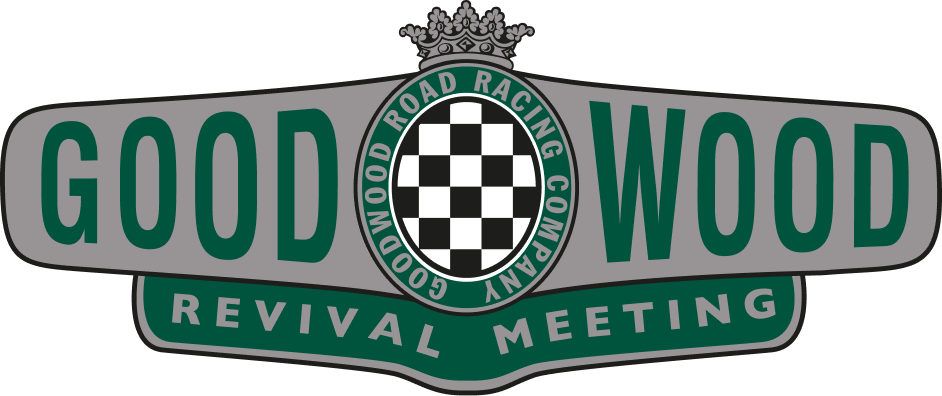Doug Nye – Ferrari's Lost Greats
 Doug Nye
Doug Nye
Back in the early 1980s one of the Mille Miglia Retro events passed by the gates of the Ferrari factory in Maranello, on its way to Modena and beyond to Brescia. Mr Ferrari himself graciously agreed to be present there, seated behind a table with a parasol over the top – signing the road books of participants as they drew to a brief stop in front of him.

At that time, top British engineer Harvey Postlethwaite was Ferrari’s chief engineer on the Formula 1 chassis side. He brought the age-old team up to date with the latest in composites technology. He liked living and working in Italy, and the Modenese he worked with liked working with him – not least because he had the ear, the sensitivity and the capability to learn not just Italian, but the thick local Modenese dialect, which he apparently got off to a tee. I believe it would be pretty much akin to a Berliner learning Brummagem. Not easy.
Mr Ferrari took to Harvey, but, like others within the team, had real trouble with his name. I heard it pronounced ‘Pozzoly-twyte’ as about the nearest anyone there came to getting it right. Very quickly they fell back on ‘Harvey’ and I remember ’phoning him at the factory and the telephone operator responding “’Arra-Vee’? You want ‘Arra-Vee’? You holding one moment please…”
Well, for that Mille Miglia Retro signing, Mr Ferrari asked Harvey to sit with him there – “You’re English – you know about these old car people”. Later, Harvey told me how, at one point after the 50th obsequious American, the 20th respectful Brit, and the 10th speechless (camera-wielding) Japanese had come forward to have their road books signed, The Old Man turned to him and asked “What’s the matter with these people? Why do they drive all our old junk instead of buying our latest…”

Ferrari Dino 246 1958 - Hawthorn, Italian GP, Monza
Like all Real Racers, Mr Ferrari had little time for the past – and not much even for yesterday – for him it was always the present, the fleeting moment, and tomorrow that really mattered to him.
This had always, plainly, been the case. Back in the 1950s, when he first entertained thoughts of Stirling Moss driving for him, then Mike Hawthorn, and then Peter Collins and others – his eyes and thoughts would have been squarely focused on the future, both short and long term. About the only thing that made him spend time thinking about matters bygone would be evening dinner – often in a favoured local restaurant with old friends and associates at his table – or, most uncomfortably, when he was forced to revisit the past.
Those uncomfortable moments certainly occurred with increasing frequency through the later 1950s. Mr Ferrari, his activities and what the Ferrari brand stood for within Italian culture took a hit early in 1957, when the team’s reigning Mille Miglia ‘champion’ Eugenio Castellotti – a national celebrity – was fatally injured when his Formula 1 Lancia-Ferrari crashed while testing at Modena aerautodromo. There was no medical help nor ambulance available for him, and he was instead bundled into a private car to be rushed to the trauma department, arriving beyond help. When telephoned to be told of the accident, Mr Ferrari allegedly ignored news of the luckless driver, and simply asked “How bad is the car?”
He’d been there before. He’d seen it all before – ever since picking his dying mentor and team-mate Ugo Sivocci from amongst the wreckage of his Alfa Romeo ‘P1’ Grand Prix car at Monza in 1923… Poor Castellotti was just the latest on the list. But with the Italian mass media barely settled after that tragedy, disaster beset the 1957 Mille Miglia. Ferrari’s finest finished first and second that year – Piero Taruffi winning from ‘Taffy’ von Trips – but their team-mate ‘Fon’ de Portago and his navigator, Ed Nelson, both lost their lives when their sister car crashed at high speed almost within sight of the finish. Making a bad situation infinitely worse, their crashing car had also hit a knot of roadside spectators – killing several, including children, and injuring more.

1959 Ferrari Dino 246 - Tony Brooks winning the French GP at Reims
Since this awful disaster happened so close to the media-packed finish at Brescia, the pressmen piled into their road cars and rushed to the scene. Their outpourings then made a ghastly situation simply unacceptable, and Ferrari – plus the notion of The Old Man facilitating rich young men in an irresponsible activity that was slaughtering the nation’s children became vilified, even – officially – by the Vatican.
The legal wrangle which followed overshadowed Ferrari’s every activity for the next four years. Whenever another hearing took place The Old Man was forced to look back; to defend his company, his people, and himself.
Into 1958, Luigi Musso became Italy’s last surviving truly frontline racing driver. It weighed heavily upon the driven, rather haughty Roman, and trying to put British team-mate Mike Hawthorn in his place during the French Grand Prix Musso crashed his Formula 1 Ferrari Dino V6, and he died too. A month later, Peter Collins – winner of that year’s British GP for Ferrari – ran out of brakes, dampers and luck in the German Grand Prix at the Nürburgring, and he was gone. Mike Hawthorn famously clinched that year’s Drivers’ World Championship title by just a single point from Moss in the British Vanwall. Mike announced his retirement from racing – but in January 1959 died in a road accident on the A3 at Guildford.

1960 Ferrari Dino 246 - Phil Hill in the BRDC International Trophy at Silverstone
So much dark and shade must have dragged at Mr Ferrari whenever he allowed himself to ponder upon it. So I’d guess he did not. But the legal ramifications of the de Portago inquiry remained ever present, until in 1961 the inquiry was finally settled. The incident’s cause was put down to a tyre failure, slashed by cat’s-eye marker studs; La Ferrari not to blame.
Ferrari could relax – but only briefly, because in the Italian Grand Prix that September von Trips crashed into the crowd at the end of Monza’s back straight. He and 14 spectators died – and a new legal process began, which would last for another four years.
So Mr Ferrari’s lifelong obsession and commitment to the then always-dangerous sport of motor racing brought both light, and dark. This alone makes the title of his autobiography, ‘My Terrible Joys’, completely understandable.
Right now I am involved – amongst so many other things – with a documentary being made for Universal Studios, covering the lost lives of those five great Ferrari drivers of the 1950s – Hawthorn, Collins, Musso, Castellotti and de Portago. The unit filmed details – and recorded suitable sound effects – at the Goodwood Revival Meeting in September, and is shortly to film further action with Formula 1 Ferrari Dino V6 and Lancia V8 cars.

Revival 2016 - Rob Hall in the 1960 Ferrari Dino 246 flanked by race-winning Julian Bronson Scarab-Offenhauser.
There is a problem here, however, because back in the ’50s Mr Ferrari and his men quickly found that selling ex-team Grand Prix cars into private hands was a pain in the posterior. None of their Lancia-Ferrari V8 cars campaigned from the Italian GP of 1955 through to the end of ’57 was ever sold. Instead the engines and transmissions were mostly stored away, while the chassis were all cut up and scrapped. It was during 1957 that the first Dino V6-engind Formula 1 cars emerged, and of the Hawthorn-Collins-Musso-Trips-Phil Hill 1958 stubby Dino 246s, none was ever sold, and none survived.
For 1959 the Dino 246 and slightly larger-capacity Dino 256 F1 team cars emerged redesigned, using voluptuous Fantuzzi bodywork and boasting such modern improvements as disc brakes, and telescopic dampers. Again not one survived.
Into 1960, the Dino 246/256 V6-engined family reached its last iteration. Pannier fuel tanks, shortened tails, a lower, more stark, more sleek body style – disc brakes – all-independent suspension – and Phil won the Italian GP in this last front-engined dinosaur. At least two of these cars survived – and in the 1980s Sir Anthony Bamford backed Graypaul Engineering’s reconstruction of some gorgeous copies using many period bits that he had saved from the Maranello scrapman.

The atmosphere of 1950s Formula 1, in abundance - Revival 2016
But if you need to film an accurate, informative, and convincing documentary, both on budget and on time, it’s absolutely not easy to reflect the reality of 1956-58 by running cars today. The unit concerned is shortly to do its thus-far formidable best with what one generous owner is making available to be run, and one of my tasks now seems to be providing some armour plate to avert too much sniping from the eagle-eyed rivet-counting nerd fraternity – once the finished footage hits the screen.
The production team seem to regard me as having become their typical “eagle-eyed rivet-counting nerd” – so I guess when it all goes horribly wrong (yes, you are reading it right here) you can blame me.
I can only confirm that, above all we are trying hard to get it right – but without the right tools to use, it’s very, very tricky…
Photography courtesy of The GP Library.
Ferrari
Doug Nye





